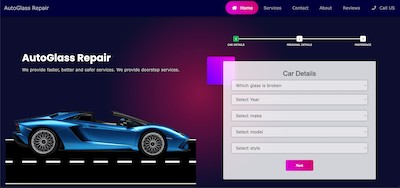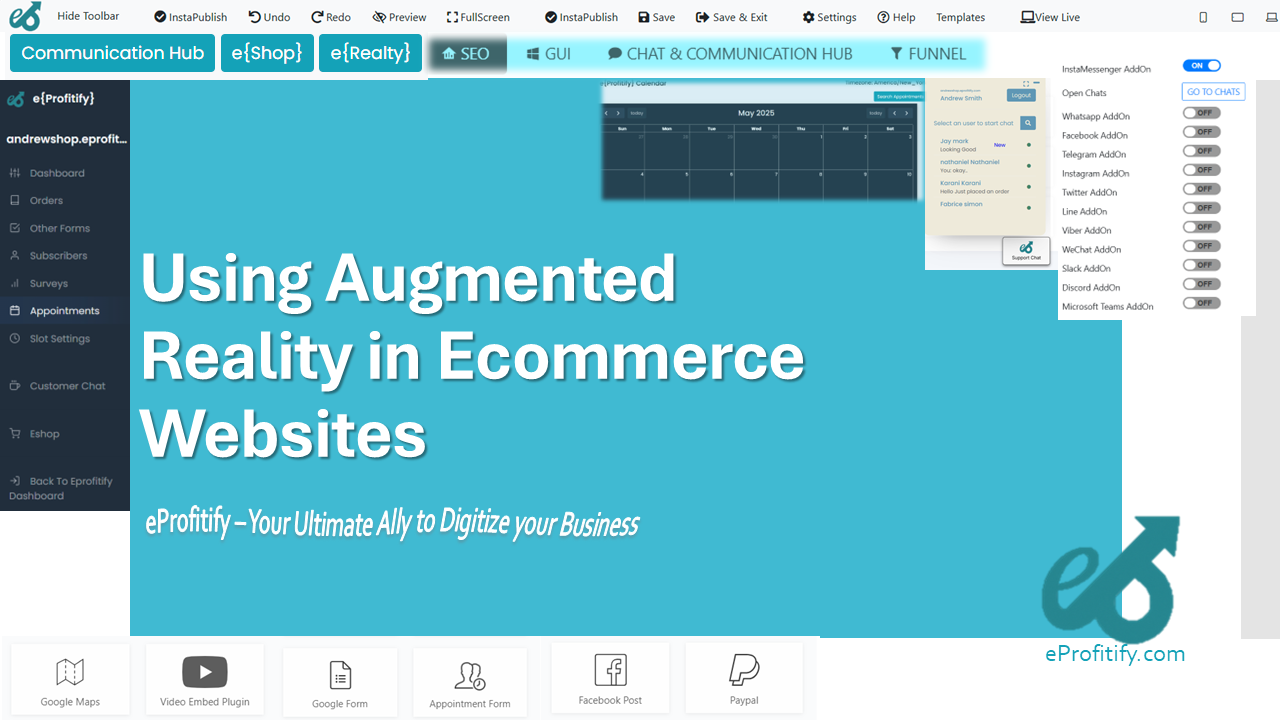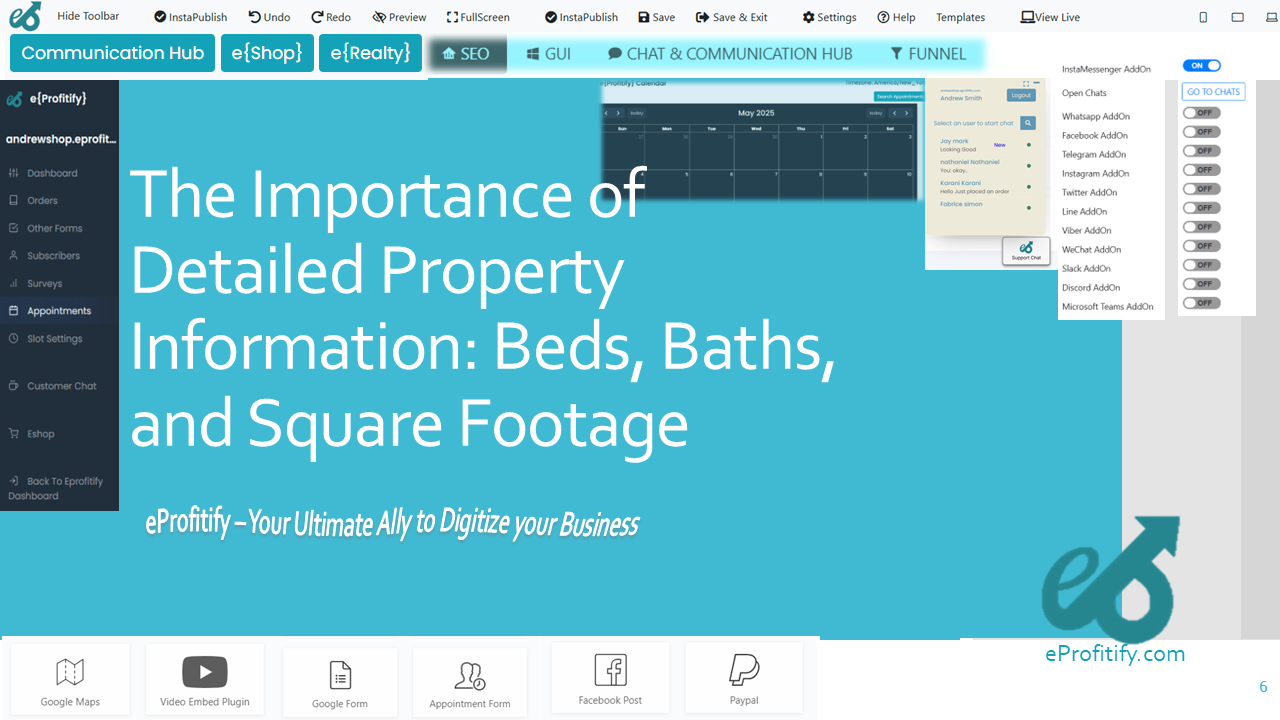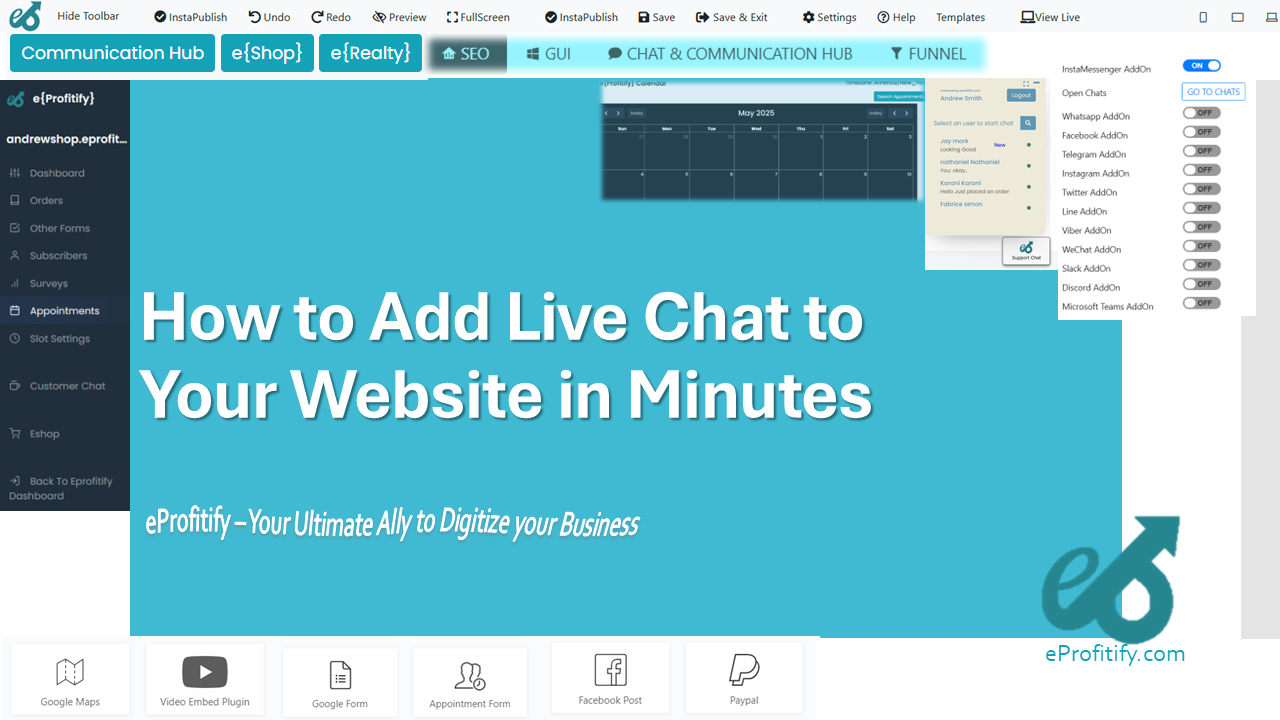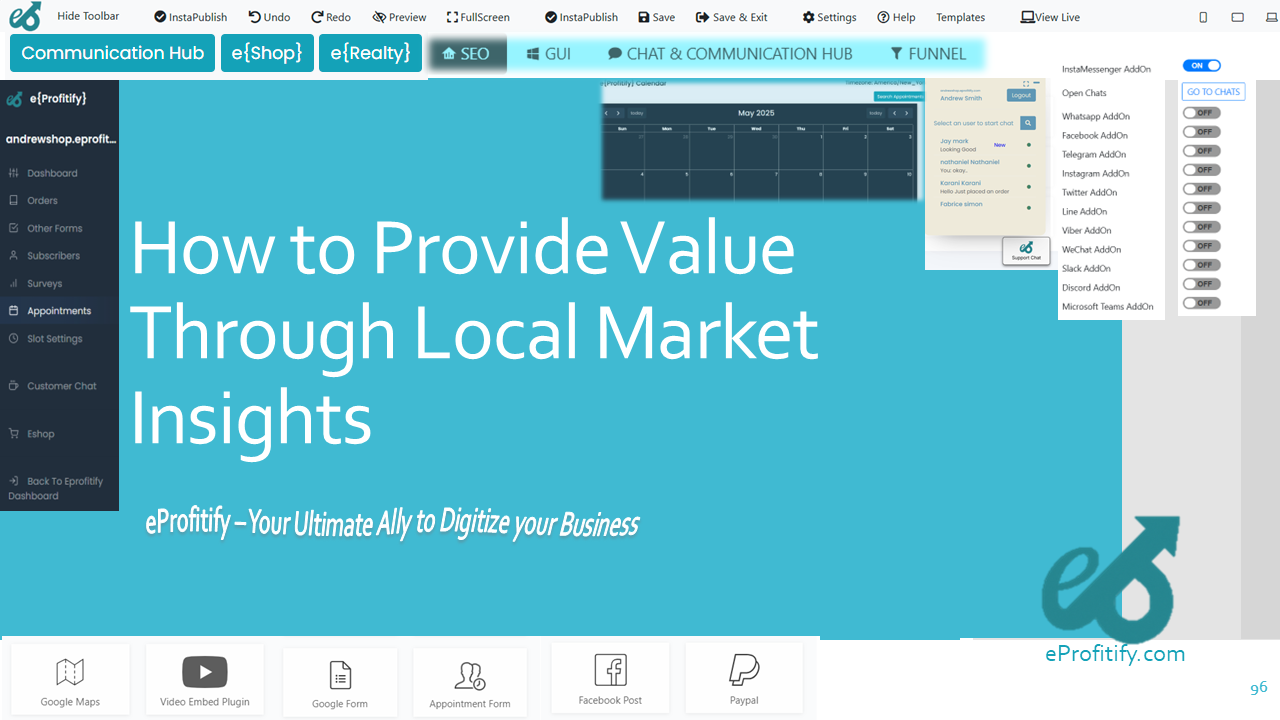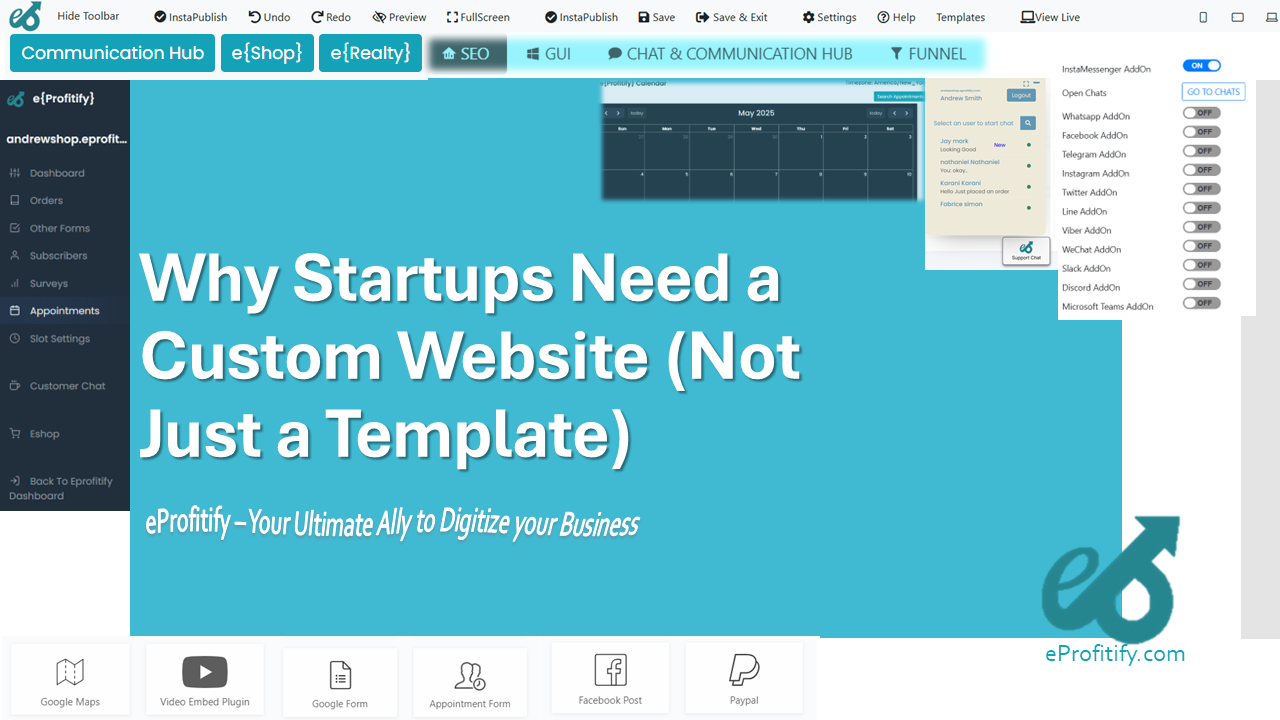How to Manage Your Food Trucks Schedule and Locations Using Technology
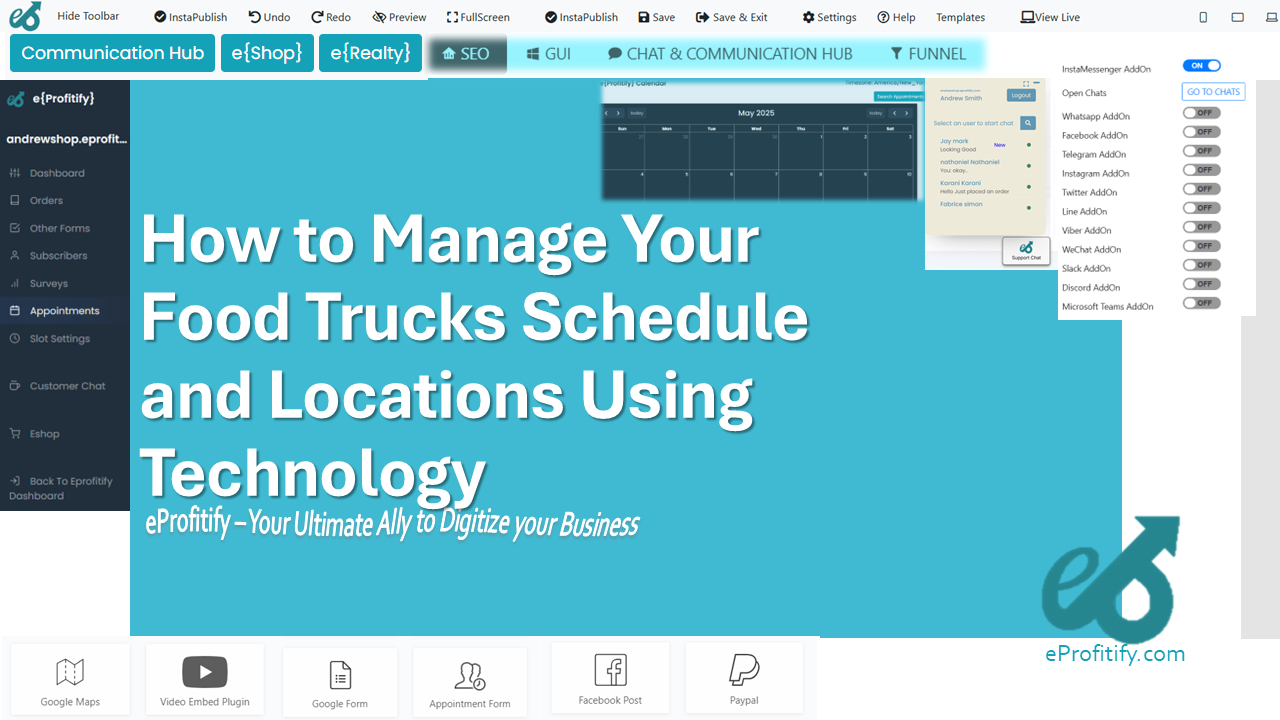
Schedule a LIVE Zoom call with an eProfitify Expert.
How to Manage Your Food Truck Schedule and Locations Using Technology
The food truck industry has surged in popularity, evolving from a niche market to a global phenomenon. With the global food truck market projected to reach $6.57 billion by 2030, growing at a compound annual growth rate (CAGR) of 6.3%, operators must leverage technology to stay competitive. Efficiently managing schedules and locations is critical for profitability, customer retention, and operational agility. This article explores how technology streamlines these aspects, with a focus on eProfitify—a leading platform offering tools like instant messaging, appointment management, eCommerce, and CRM.
The Importance of Effective Scheduling and Location Management
Food trucks face unique challenges: fluctuating customer demand, weather disruptions, and the need to maximize limited resources. Poor scheduling or location choices can lead to wasted fuel, missed sales opportunities, and dissatisfied customers. According to IBISWorld, the U.S. food truck industry grew by 8.3% annually from 2017 to 2022, intensifying competition. Operators must adopt tech-driven strategies to thrive.
Leveraging Technology for Scheduling
1. Digital Calendars and Scheduling Tools
Platforms like Google Calendar or specialized tools enable real-time schedule coordination. They allow operators to plan events, track catering gigs, and avoid double-booking. Integration with team devices ensures everyone stays informed. For example, eProfitify’s appointment management system syncs with calendars, automates reminders, and streamlines bookings, reducing no-shows by up to 30%.
2. Route Optimization Software
Route planning tools like Routific or RoadWarrior analyze traffic, distance, and customer density to suggest efficient routes. Studies show optimized routes reduce fuel costs by 15% and service times by 20%. eProfitify integrates with GPS navigation apps, allowing drivers to adapt routes in real time based on traffic alerts.
3. Real-Time GPS Tracking
GPS systems like GPS Trackit provide fleet visibility, enabling operators to monitor truck locations and adjust schedules dynamically. This reduces delays and improves customer trust. For instance, a food truck using GPS tracking can notify customers via social media of their arrival time, enhancing transparency.
4. Instant Messaging for Coordination
Team communication tools like Slack or eProfitify’s instant messaging feature facilitate real-time updates. If a truck breaks down, staff can quickly reassign orders or redirect to a backup location, minimizing downtime.
Optimizing Location Selection with Tech Tools
1. Social Media and Online Presence
Platforms like Instagram and Facebook are vital for announcing locations and engaging customers. A survey by Food Truck Empire revealed that 85% of food truck customers discover vendors through social media. eProfitify’s social media integration auto-posts schedules, shares live location updates, and tracks engagement metrics to identify high-traffic areas.
2. Foot Traffic Analysis Tools
Apps like Placer.ai analyze foot traffic patterns, helping operators identify hotspots. For example, a food truck near a weekday business district might shift to a weekend festival location based on data. Businesses using such tools report a 30% increase in sales at optimized locations.
3. Weather Forecasting Apps
Weather apps like AccuWeather help avoid revenue losses from bad weather. A National Food Truck Association study found that 25% of revenue drops are weather-related. Integrating forecasts into scheduling reduces risks.
The Role of Data Analytics
1. POS Systems and Sales Data
Modern POS systems track sales trends, popular menu items, and peak hours. For example, data revealing high lunchtime sales in a business park can inform scheduling. Businesses using analytics see 50% higher profitability than those that don’t, per McKinsey.
2. Customer Feedback and Reviews
Online reviews on Yelp or Google highlight location preferences. eProfitify’s CRM tools aggregate feedback, enabling personalized marketing and loyalty programs. Engaging loyal customers through CRM can boost retention by 27%, according to Bain & Company.
eProfitify: A Comprehensive Solution
eProfitify stands out as an all-in-one platform tailored for food trucks. Its suite of features addresses every operational challenge:
- Instant Messaging: Coordinate teams and vendors in real time.
- Appointment Management: Automate bookings and reduce no-shows.
- Ecommerce Integration: Enable online pre-orders, cutting wait times and food waste. A 2022 study showed food trucks with online ordering saw 40% higher sales.
- CRM: Track customer preferences and send targeted promotions.
- Analytics Dashboard: Generate reports on sales, traffic, and ROI to refine strategies.
A case study from an eProfitify user in Austin, Texas, demonstrated a 30% operational efficiency boost within three months by centralizing scheduling, CRM, and analytics.
Conclusion
Adopting technology is no longer optional for food truck success. From route optimization to CRM, tools like eProfitify streamline operations, cut costs, and enhance customer experiences. As AI and machine learning advance, predictive scheduling and dynamic location planning will become standards. Embrace these innovations today to stay ahead in the bustling food truck landscape. Platforms like eProfitify not only simplify management but also pave the way for scalable growth. Ready to revolutionize your food truck business? The future is tech-driven.
